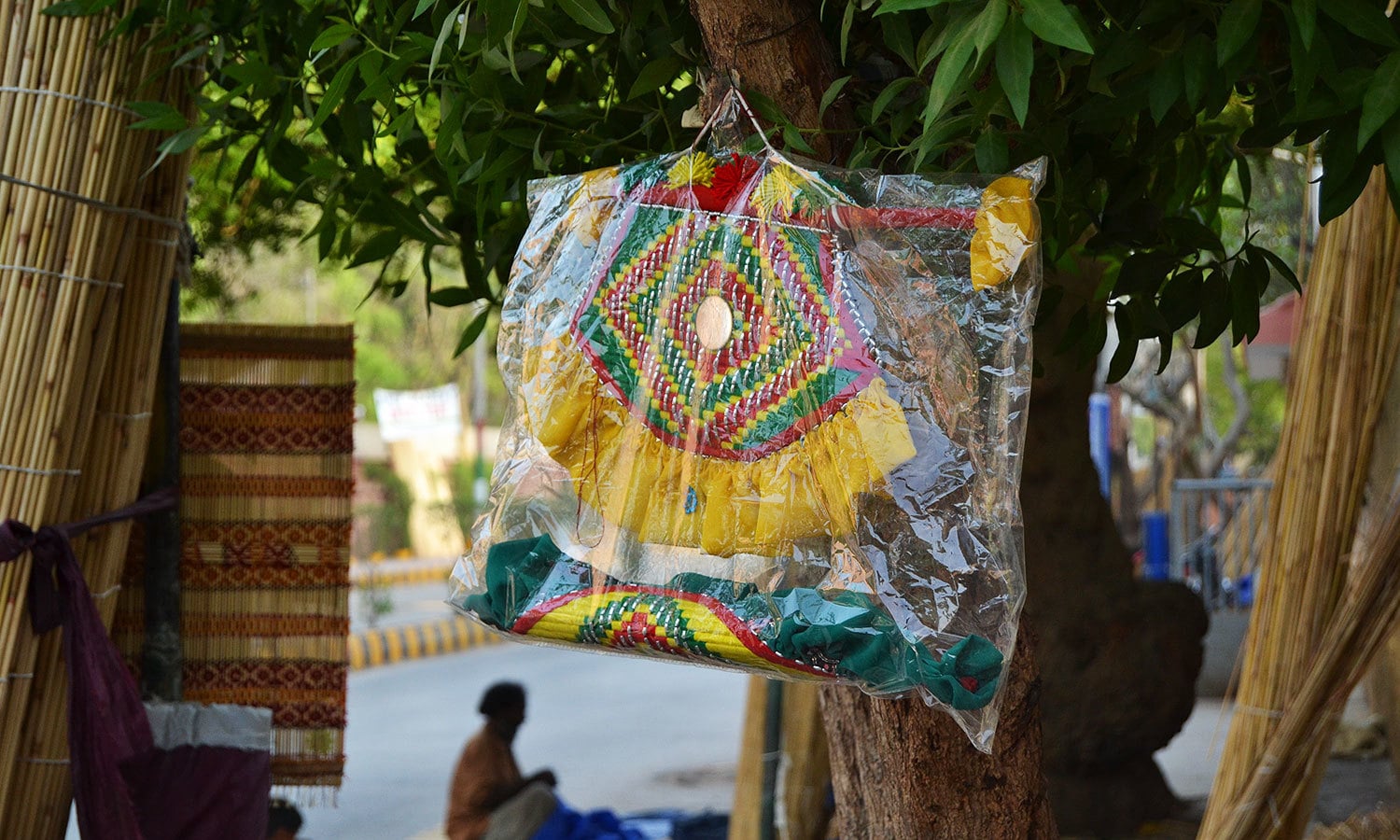The Jogis of Hyderabad
There is a whole different world I encountered on the road that begins near the Fatima Jinnah Road (formerly Gidu Bandar Road, and also known as Thandi Sarak) and ends near the Hyderabad Press Club.
It is hard to miss the men and women sitting on footpaths on either side of this road, creating craft from reed and bamboo sticks. You’ll see their handiwork spread out beside them: chairs, blinds, tables and wall-decorations.
This is a common sight for the residents of Hyderabad; they frequent these roadside artisans with specific designs and detail for custom-made furniture and house decorations.
 |
| A Jogi male smiling despite the odds. |
 |
| Jogi families work together. Their women make sure the families end the day's work in time. |
 |
| Precise measurements are important. Once the reeds have been cut according to these measurements, the next phase begins. |
 |
| Two or more people work in unison when making reed-blinds. |
 |
| A decorative fan. Such objects are quite popular in Sindh. |
The exhibition of their handiwork speaks volumes of their talent. But who are these people? And why do they spend their days on the city’s footpaths?
This group of talented individuals call themselves ‘Jogi’. Fascinatingly, these people have a diverse set of roots, hailing from places such as Rajasthan and Gujarat in India and Tharparkar in Pakistan. Jogi is a colloquial term for Yogi, a Sanskrit word. The word Jogi suggests a sense of hermitage and religious devotion, but in this context, Jogi refers to the community itself. Seemingly, they have adopted this title after decades of being together.
Mostly, the families are Hindus. According to them, their forefathers used to have their own houses in the area where they currently live, but those were taken away from them.
Land belonging to them was snatched, and tall buildings were erected where their homes once stood. Initially, they were promised reimbursements but literally decades have passed and no help has been offered.
 |
| All he wanted was a good photo, nothing else. |
 |
| Initially shy, she started smiling once a fellow jogi encouraged her. He even helped her adjust the headdress. |
 |
| These kids hope to get an education some day. |
 |
| The most curious child of them all. He followed me around for more photos and laughter. |
Life is difficult for these craftsmen. Narang Das, one of the members of the settlement, spoke about the issues they face, “It is difficult to live in these conditions. We have been promised so much but nothing has happened. We want to live better lives.”
They spend their nights in tiny quarters. With so little space, it especially gets difficult to get any sleep in the summers. A few of them then come back to sleep on the pavements.
Ashok, another member of the Jogi settlement, remarked that he doesn’t see much hope. He, along with a few other men, want to leave Pakistan and settle somewhere in India and start a new life.
The constant social pressures are only adding to their misery. Ashok also said that their grandparents lived respectable lives, and they were here before the creation of Pakistan. Sadly, no one wants to listen to their stories.
Stories of how they create beautiful crafts on footpaths under a scorching sun all day to feed their families. How their children, who could be studying in schools and universities, now have to work alongside their parents. Ashok also expressed his disappointment in the government of Sindh, which promised free education to their children, and never delivered.
 |
| Narang Das wakes up early every morning, and lives for the day. |
 |
| Jogis make reed-blinds more commonly known as 'chiks'. They also make wall-decorations, chairs and tables out of bamboo and reed sticks. |
 |
| Jogis also include photos, ajrak prints and little mirrors into the wall-decorations, which are part of the Sindhi art. |
 |
| Jogis also include photos, ajrak prints and little mirrors into the wall-decorations, which are part of the Sindhi art. |
 |
| Special orders can include complex flower designs, maps, images of a religious/political nature, calligraphic texts and so on. |
On the footpaths, they wait for customers. There are long stretches of days when they won’t get even one order, and when such a time comes, they pick up their handiwork and walk through the streets of Hyderabad, hoping to sell some.
There is also a Christian family in the settlement. Their roots are Goan. While talking to Leon, one of the children of the family, I learned that they speak fluent English, apart from Urdu, at home.
It is indeed saddening to see how these people are being treated in the land where their grandparents once lived.
Considered of no importance by their countrymen, their struggle continues, as their hopes diminish.
—Photos by author
 |
Syed Zeeshan Ahmed loves exploring the past and beyond.
He blogs at www.iamzeeshan.blogspot.com. And tweets @ImZeesh.



